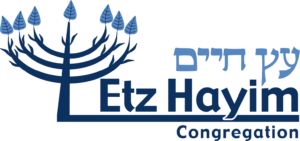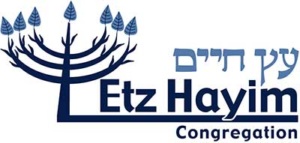Instructions for counting the omer are found on our Omer Overview Page. You can find the specific blessing for today at chabad.org.
We’re dedicating new Siddurim on the first day of Shavuot. In honor of this wonderful occasion, we’re using the counting of the Omer to learn about the siddur.
Enjoy today’s siddur related question and answer, which was provided by The Internet.
Sometimes we say the Amidah silently followed by the Chazzan repeating in full. Sometimes we start the Amidah together and finish silently. What’s going on here?
Nevertheless, when time is running short or the members of the minyan are unable to remain assembled for a prolonged period of time, many congregations implement an abridged form of the repetition, known as the “heicha kedusha”.[2] When the heicha kedusha form of repetition is used it is generally only the first three blessings of the shemoneh esrei which are recited out loud.[3] This abbreviated form of the repetition is generally only used at mincha time, but is occasionally employed when needed at shacharit, as well.
…
Among the rationalizations for doing a heicha kedusha and forgoing the full repetition is because, as mentioned above, the primary purpose of the repetition was for the benefit of those who did not know how to pray on their own. In fact, those who are able to pray on their own, as is the case with most people today, are forbidden to rely on the repetition to discharge their obligation to pray.[10] Therefore, since most people are able to recite the silent shemoneh esrei on their own, either in English or Hebrew, the need for a repetition in our day is minimized. Indeed, it is reported that the Rambam did away with the repetition of shemoneh esrei entirely because people weren’t properly paying attention to it or responding “amen” when required.
“”
https://www.ou.org/torah/halacha/dalet-amot-of-halacha/heicha-kedusha/
Bonus Question: The Amidah is often called the Shemoneh Esrei, which means “18.” But there’s 19 blessings in the weekday in the Amidah, what gives?
“”In the 5th century B.C.E., the Men of the Great Assembly composed a basic prayer, covering just about everything you could want to pray about. This is the Shemoneh Esrei, which means “18” and refers to the 18 blessings originally contained within the prayer. It is also referred to as the Amidah (standing, because we stand while we recite it), or Tefilah (prayer, as in The Prayer, because it is the essence of all Jewish prayer). This prayer is the cornerstone of every Jewish service.
The blessings of the Shemoneh Esrei can be broken down into 3 groups: three blessings praising G-d, thirteen making requests (forgiveness, redemption, health, prosperity, rain in its season, ingathering of exiles, etc.), and three expressing gratitude and taking leave. But wait! That’s 19! And didn’t I just say that this prayer is called 18?
One of the thirteen requests (the one against heretics) was added around the 2nd century C.E., in response to the growing threat of heresy (including Christianity, which was a Jewish sect at the time), but at that time, the prayer was already commonly known as the Shemoneh Esrei, and the name stuck, even though there were now 19 blessings. Many non-Jews, upon hearing that there is a blessing like this, assume it is much more offensive than it actually is. Here is what it says:
‘For slanderers, may there be no hope; and may all wickedness quickly be destroyed, and may all your enemies be cut off swiftly. The intentional [sinners], swiftly may they be uprooted, broken, cast down and subdued, swiftly and in our days. Blessed are you, L-RD, breaker of enemies and subduer of intentional [sinners].’
“”
Learn More
You can learn more at:
https://judaism.stackexchange.com/questions/1662/how-does-one-do-hechi-kedusha


